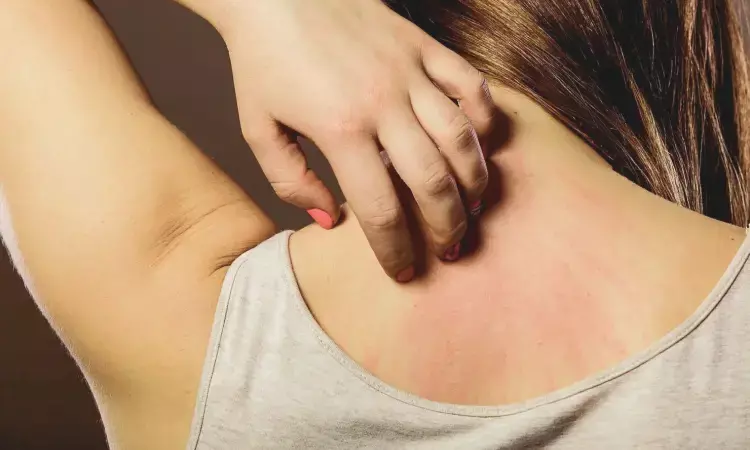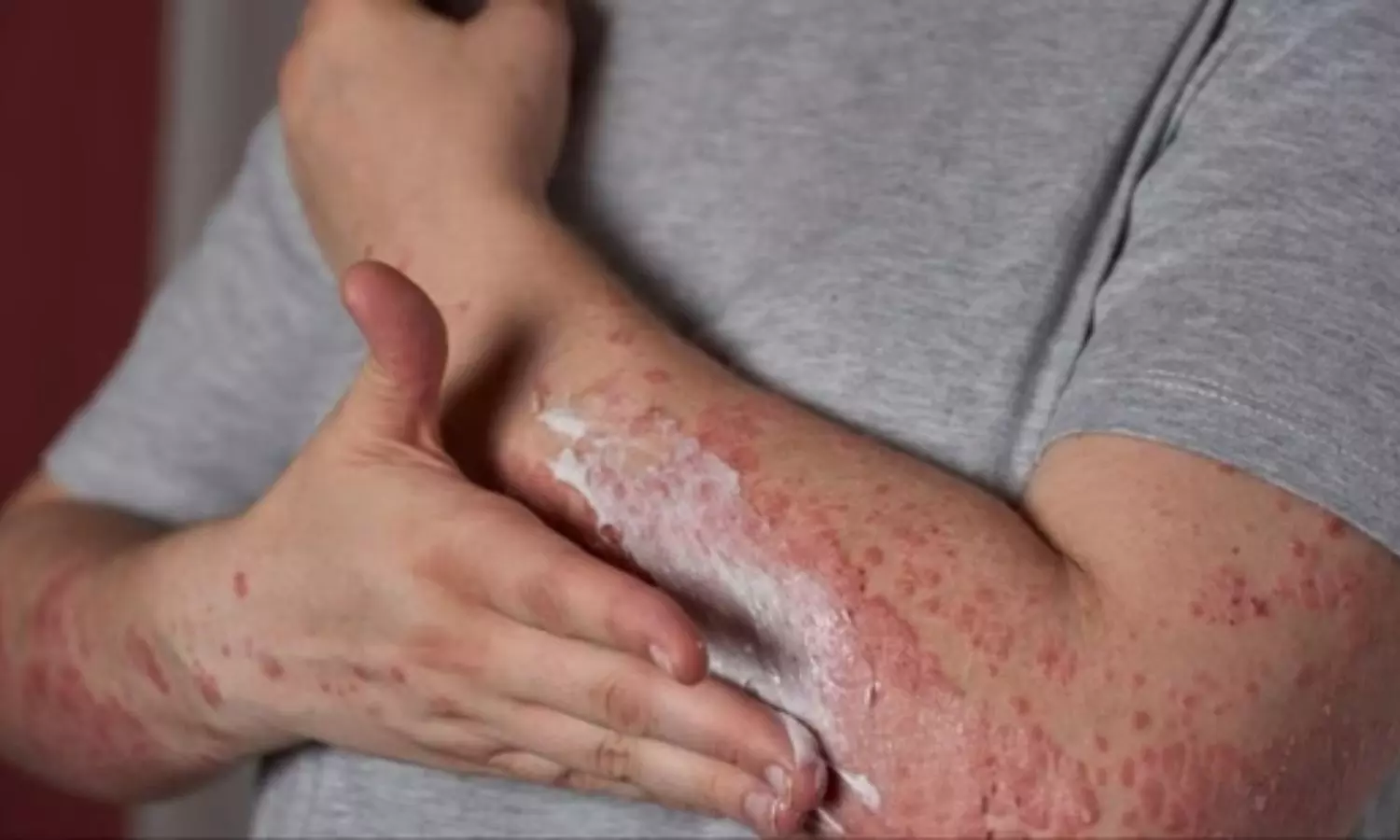- Home
- Medical news & Guidelines
- Anesthesiology
- Cardiology and CTVS
- Critical Care
- Dentistry
- Dermatology
- Diabetes and Endocrinology
- ENT
- Gastroenterology
- Medicine
- Nephrology
- Neurology
- Obstretics-Gynaecology
- Oncology
- Ophthalmology
- Orthopaedics
- Pediatrics-Neonatology
- Psychiatry
- Pulmonology
- Radiology
- Surgery
- Urology
- Laboratory Medicine
- Diet
- Nursing
- Paramedical
- Physiotherapy
- Health news
- Fact Check
- Bone Health Fact Check
- Brain Health Fact Check
- Cancer Related Fact Check
- Child Care Fact Check
- Dental and oral health fact check
- Diabetes and metabolic health fact check
- Diet and Nutrition Fact Check
- Eye and ENT Care Fact Check
- Fitness fact check
- Gut health fact check
- Heart health fact check
- Kidney health fact check
- Medical education fact check
- Men's health fact check
- Respiratory fact check
- Skin and hair care fact check
- Vaccine and Immunization fact check
- Women's health fact check
- AYUSH
- State News
- Andaman and Nicobar Islands
- Andhra Pradesh
- Arunachal Pradesh
- Assam
- Bihar
- Chandigarh
- Chattisgarh
- Dadra and Nagar Haveli
- Daman and Diu
- Delhi
- Goa
- Gujarat
- Haryana
- Himachal Pradesh
- Jammu & Kashmir
- Jharkhand
- Karnataka
- Kerala
- Ladakh
- Lakshadweep
- Madhya Pradesh
- Maharashtra
- Manipur
- Meghalaya
- Mizoram
- Nagaland
- Odisha
- Puducherry
- Punjab
- Rajasthan
- Sikkim
- Tamil Nadu
- Telangana
- Tripura
- Uttar Pradesh
- Uttrakhand
- West Bengal
- Medical Education
- Industry
Iberdomide shows Better Outcomes in Cutaneous Manifestations in Systemic Lupus Erythematosus in Multinational Trial

A groundbreaking trial found that Iberdomide, a cereblon modulator, can be added as a background medication in subacute and chronic cutaneous lupus erythematosus. The trial results were published in the Journal of the American Academy of Dermatology.
Cutaneous lupus erythematosus (CLE) is one of the common skin conditions and is an early sign of systemic lupus erythematosus (SLE). It presents acute, subacute, and chronic skin conditions. The presence of autoantibodies and dysregulated type 1 interferon play a significant role in SLE and CLE. Key transcription factors like Ikaros (IKZF1) and Aiolos (IKZF3) are the genetic predisposition to SLE. Iberdomide is a high affinity cereblon ligand promoting ubiquitination, leading to the degradation of Ikaros and Aiolos. This leads to a reduction of their protein levels in various leukocytes.
Previous research showed that Iberdomide reduced the Cutaneous Lupus Erythematosus Disease Area and Severity Index Activity (CLASI-A) score. They also evaluated the efficacy of 0.45 mg Iberdomide in patients with active, moderate to severe SLE which showed significantly better response over placebo. Literature showed that Iberdomide increased regulatory T-cell populations and reduced CD19 B cells, along with a reduction in the type I IFN gene signature. Hence, researchers conducted a study to obtain additional information on changes in cutaneous manifestations of SLE from the phase 2 study, focusing on exploratory endpoints at week 24 with additional analyses at weeks 52 and 104.
A phase 2 multinational clinical trial was carried out by randomization (2:2:1:2) to receive Iberdomide (0.45 mg, 0.30 mg, or 0.15 mg) or placebo for 24 weeks along with continuing their standard SLE medications. Treatment stratification was done based on baseline steroid use and the SLE disease activity index 2000 to balance disease severity. After 24 weeks individuals were rerandomized to Iberdomide (0.45 mg or 0.30 mg) who continued on their initial dose through week 52 and could enroll in a long-term extension for up to 2 years. The primary endpoint was the assessment of Cutaneous Lupus Erythematosus Disease Area and Severity Index Activity (CLASI-A) score, assessing erythema, scale/hypertrophy, mucous membrane lesions, and nonscarring alopecia. The exploratory endpoint included CLASI-50 achieving a 50% reduction from baseline in CLASI-A score. Post-hoc assessments were done for CLASI-A based on CLE subtypes and gene expression levels.
Findings:
- The mean (SD) baseline CLASI-A score was 6.9 (7.0).
- About 28% of patients had a score ≥8; 56% had acute CLE, 29% chronic CLE, and 16% subacute CLE.
- Mean CLASI-A improvement in patients with baseline score ≥8 was 39.7% for iberdomide 0.45 mg versus 20.1% for placebo at week 4 (P=0.032), with continued improvement through week 24 (66.7% vs 54.2%; P=0.295).
- Proportions of patients achieving ≥50% CLASI-A reduction from baseline at week 24 were significantly greater for iberdomide 0.45 mg versus placebo for patients with subacute and chronic CLE but not for the overall population or patients with baseline CLASI-A ≥8.
Thus, the study concluded that Iberdomide was beneficial to background lupus medications in patients with subacute and chronic CLE.
Further reading: Werth VP, Merrill JT, Furie R, et al. Effect of iberdomide on cutaneous manifestations in systemic lupus erythematosus: a randomized phase 2 clinical trial. J Am Acad Dermatol. Published online October 24, 2024. doi:10.1016/j.jaad.2024.09.074
BDS, MDS
Dr.Niharika Harsha B (BDS,MDS) completed her BDS from Govt Dental College, Hyderabad and MDS from Dr.NTR University of health sciences(Now Kaloji Rao University). She has 4 years of private dental practice and worked for 2 years as Consultant Oral Radiologist at a Dental Imaging Centre in Hyderabad. She worked as Research Assistant and scientific writer in the development of Oral Anti cancer screening device with her seniors. She has a deep intriguing wish in writing highly engaging, captivating and informative medical content for a wider audience. She can be contacted at editorial@medicaldialogues.in.
Dr Kamal Kant Kohli-MBBS, DTCD- a chest specialist with more than 30 years of practice and a flair for writing clinical articles, Dr Kamal Kant Kohli joined Medical Dialogues as a Chief Editor of Medical News. Besides writing articles, as an editor, he proofreads and verifies all the medical content published on Medical Dialogues including those coming from journals, studies,medical conferences,guidelines etc. Email: drkohli@medicaldialogues.in. Contact no. 011-43720751




